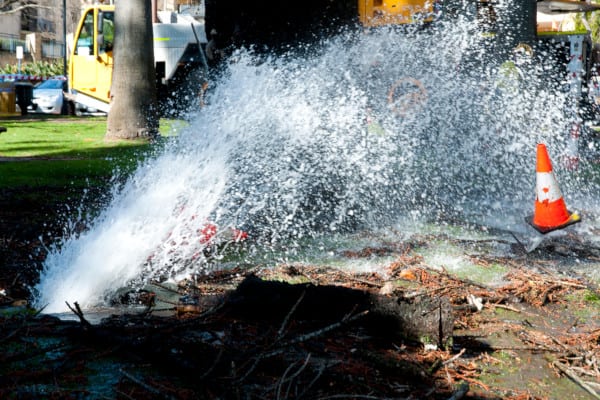Small acts can cause sudden surges in pressure that threaten water-based systems and the people who work around them
Most water-based systems – from household plumbing to municipal water supplies – are built to withstand abnormally high levels of pressure. But sometimes, something as simple as closing a faucet can trigger a sudden and even dangerous increase in pressure that those systems can’t handle: water hammer.
In this article, we explain the pressure-increasing phenomenon known as water hammer, describing what is, how it works, and how it impacts firefighting and the design of fire protection systems.
Collisions between moving water and solid objects quickly transform movement into dramatic increases in pressure
The law of conservation of energy, a fundamental principle of physics, states that energy can’t be created or destroyed – only transformed. Your oven converts electrical energy into heat. Cars transform the chemical energy of gasoline into motion. So, when water collides with a solid surface, that energy has to go somewhere.
But, unlike some substances, water can’t be crushed, and it can’t bounce back when it suddenly hits a wall. If a valve suddenly closes, causing a collision with fast-moving water, water’s movement transforms into pressure.
In slow motion, water hammer looks something like this: the leading edge of the water – the part that collides with the valve – stops. The water behind it begins to compress, which makes room for more water to enter the pipe. As a result, the pressure in the pipe increases, creating a quick and powerful shockwave that travels about as fast as the speed of sound.
This sort of event is called water hammer, a pressure surge following a sudden change in water’s flow rate. Most often, water hammer happens when valves suddenly close or open. If the pressure exceeds the limits of pipes, couplings, valves, or connected devices, water may damage system components or discharge from the pipe with significant force.
Some of the most awe-inspiring examples of water hammer’s destructive capacity come from hydroelectric power plants. Nearly 70 years ago, an enormous valve slammed shut at a power station in Oigawa, Japan. The resulting pressure surge split off a section of piping, creating a massive vacuum that collapsed nearly 200 feet of pipe. Sections of the plant were buried, the surrounding area flooded, and three power plant employees killed in the ensuing flood.
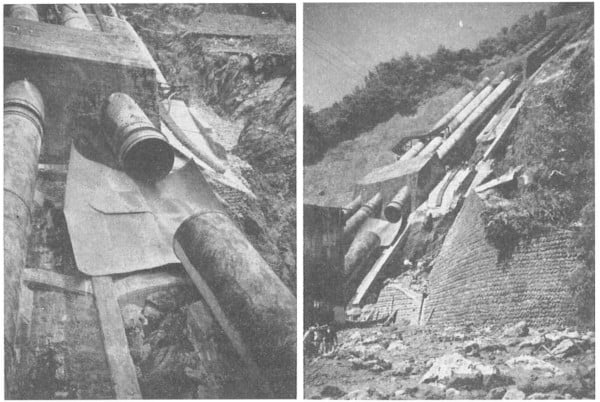
Factors including water velocity and time spent closing a valve contribute to water hammer
At the most basic level, the intensity of water hammer depends largely on the water’s velocity (or, roughly speaking, speed). In short, faster-moving water creates larger shockwaves.
In piping systems, water hammer is calculated with the formula …
P = 0.07 (VL / t)
… where P is the increase in pressure, V is the water’s velocity in feet per second, L is the length of the pipe, and t is the valve closing time. This formula means that certain changes can reduce the intensity of water hammer:
- Slowly closing a valve will reduce the intensity of the surge
- Shorter lengths of pipe are less prone to water hammer than longer ones
- Slower-moving water produces smaller pressure surges
Two other factors are at work in water-based systems: pipe diameter and the elasticity of piping materials. Pipes with larger diameters and pipes made from more flexible materials can absorb more of the pressure energy created by water hammer.
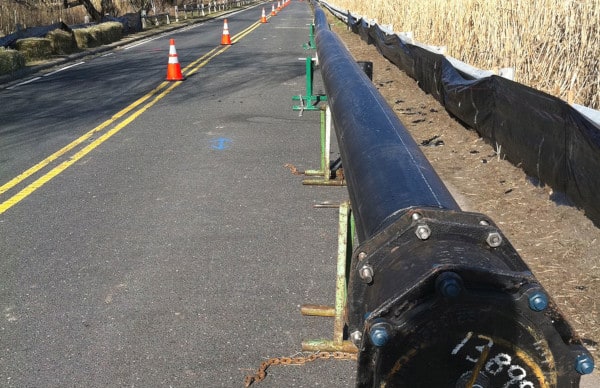
Surprisingly, existing water pressure isn’t a factor in water hammer. For example, a piping system with 50 pounds per square inch (PSI) of pressure and a piping system with 500 PSI of pressure would experience the same increase in pressure from water hammer. This means that, in some instances, low-pressure systems are even more vulnerable to water hammer than high-pressure systems. While that 500 PSI system might easily withstand a 50 PSI increase in pressure, that increase would double the pressure currently in the 50 PSI system.
Fire professionals must be wary of water hammer, especially in an emergency
In the fire protection industry, fire sprinkler systems, fire hydrants, fire hoses, and the networks of pipes supplying them with water are all vulnerable to sudden changes in pressure. Firefighters must balance the urgency of their life-saving tasks with a constant awareness of just how fragile piping systems can be. A broken pipe can render a fire sprinkler system or a fire hydrant inoperable, leaving buildings and the people in them defenseless.
In firefighting, failure to give water hammer its due can cause serious injuries. In an article at Fire Rescue Magazine, assistant fire chief Matthew Tobia of Virginia’s Loudoun County Department of Fire and Rescue explained how one fire fighter’s mistake at a fire engine’s pumping system made an often-used fail-safe against water hammer useless:
“My friend had been operating an engine on a fire, had one attack line off, and had supply lines coming into his pump. He had not had a chance to set the relief valve (a recirculating one) and was concerned that his failure to do so resulted in injuries to a firefighter who was slammed against a wall after the supply engine charged the lines to 300 psi and sent a water hammer through his engine.”
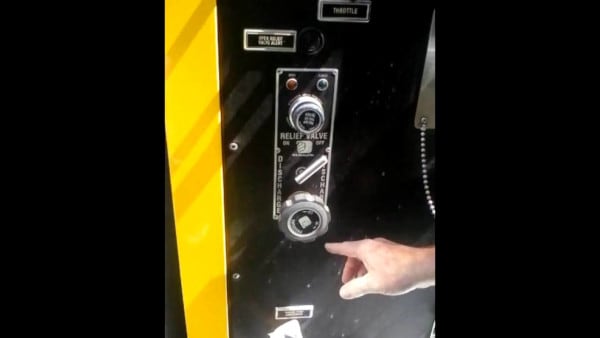
Hydrants closed too quickly can create water hammer in city water mains, causing breaches in networks of underground piping. Hose valves opened too quickly can transmit a shockwave to the firefighters attacking the fire. And sudden closure of a fire hose nozzle can damage fire hose couplings or break fire engine pumps. In short, water hammer can damage nearly every part of the water-based systems used in firefighting.
With the right equipment and common-sense practices, water hammer can be prevented in fire protection systems
In fire sprinkler systems, control valves start or stop the flow of water. Those systems that comply with standards set by the National Fire Protection Association (NFPA) follow guidelines designed to prevent control valves from causing water hammer.
To that end, NFPA 13: Standard for the Installation of Sprinkler Systems specifies a minimum closure time for control valves in fire sprinkler systems. A nearly-identical provision also governs control valves used in standpipe systems – networks of piping that act as indoor fire hydrants (NFPA 14: 4.5.2).
From the 2019 edition of NFPA 13
7.6.1 Valve Closure Time. Listed indicating valves shall not close in less than 5 seconds when operated at maximum possible speed from the fully open position.
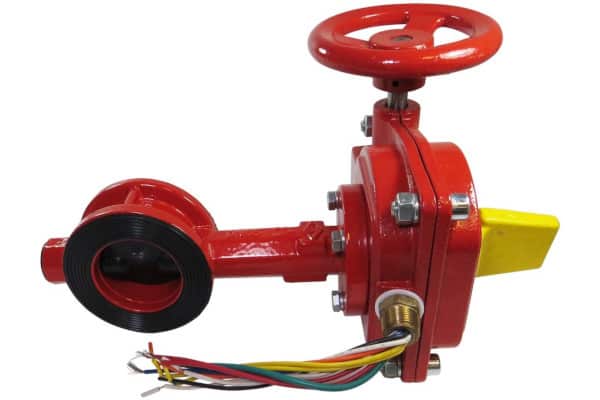
Fire engines also feature devices designed to manage or release pressure at the pump. Many fire engines include mechanical relief valves – like the ones mentioned earlier – that discharge water when the pressure gets too high. And newer fire engines may feature pressure governors that throttle the fire engine’s speed to raise or lower pressures provided to hose.
While there’s equipment in place to protect against many sources of water hammer in firefighting, others are typically prevented by good practices from fire professionals. Firefighter education courses warn against the hazards of water hammer, advising slow opening and closure of fire hydrants, valves, hose clamps, and other flow-interrupting devices.
But even at the hydrant, equipment exists to prevent water hammer. Fyrelane USA, a Texas-based manufacturer of hydrant valves and other fire protection equipment, has produced a specialized valve – called a Carlin valve – that allows hydrant operators to quickly and fully open the hydrant without the risk of water hammer.
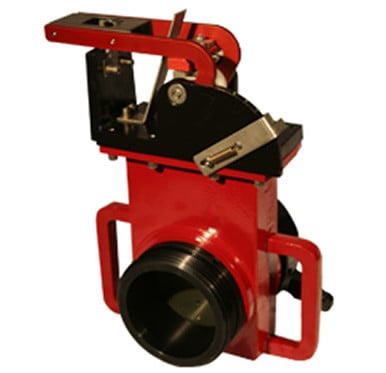
Seated between a fire hose coupling and a hydrant, Fyrelane’s Model CV45A Carlin valve restricts the flow of water with a pressure-operated sliding gate. This gate stays partially closed, releasing water gradually, until the hose is fully charged. Once the other end of the hose is connected to a closed valve on the pump – or otherwise sealed off – pressure inside the hose rises, and the valve automatically opens, allowing firefighters to make use of the hydrant’s full flow.
QRFS supplies the right equipment to prevent water hammer
If you’re looking for water-hammer-resistant control valves for fire sprinkler systems, take a look at our selection of butterfly valves. These UL-listed and FM-approved valves are slow-closing and designed for safe, long-lasting operation in NFPA-compliant fire sprinkler and standpipe systems.
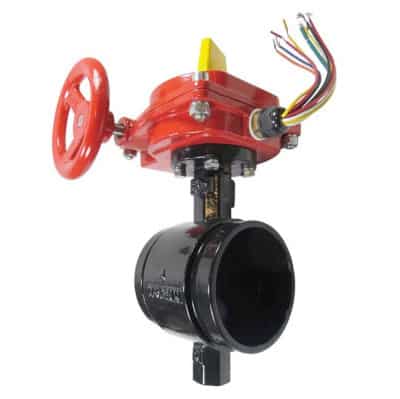
Click here to view our selection of control valves.
QRFS is also a proud distributor of products from Fyrelane USA, including their Model CV45A Carlin valve. Fyrelane’s selection includes Carlin valves for hydrants with 4″ and 4 1/2″ National Standard Thread (NST) as well as 4″ and 5″ Storz hydrant nozzles. These American-made Carlin valves deliver safe and steady flows from fire hydrants, allowing personnel to focus less on water hammer and more on putting out fires.
To order or learn more about our Carlin valves, call QRFS at +1 (888) 361-6662 or email support@qrfs.com.
This blog was originally posted at blog.qrfs.com. If this article helped you wrap your head around water hammer and how it impacts fire protection, check us out at Facebook.com/QuickResponseFireSupply or on Twitter @QuickResponseFS.


